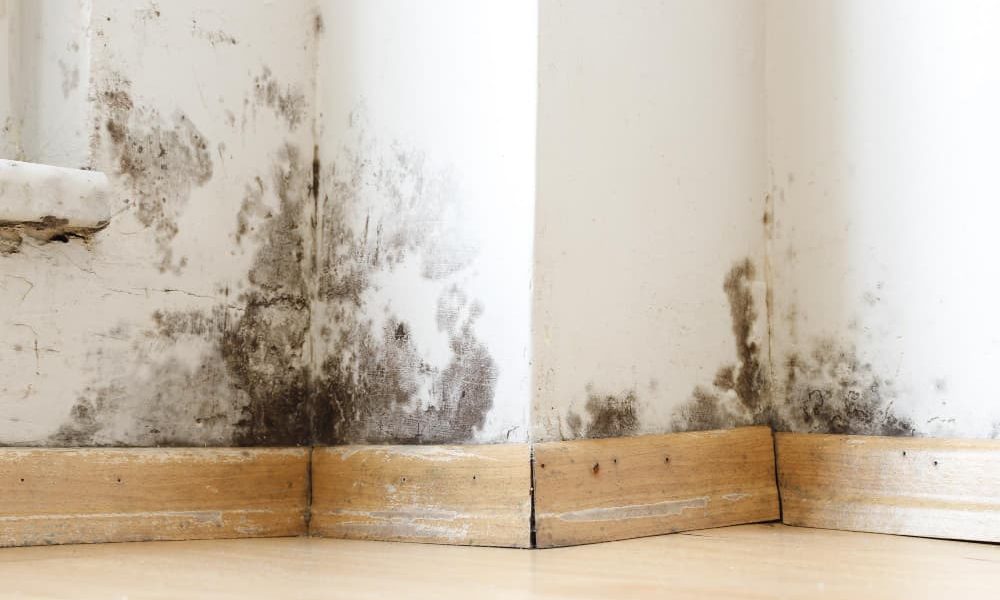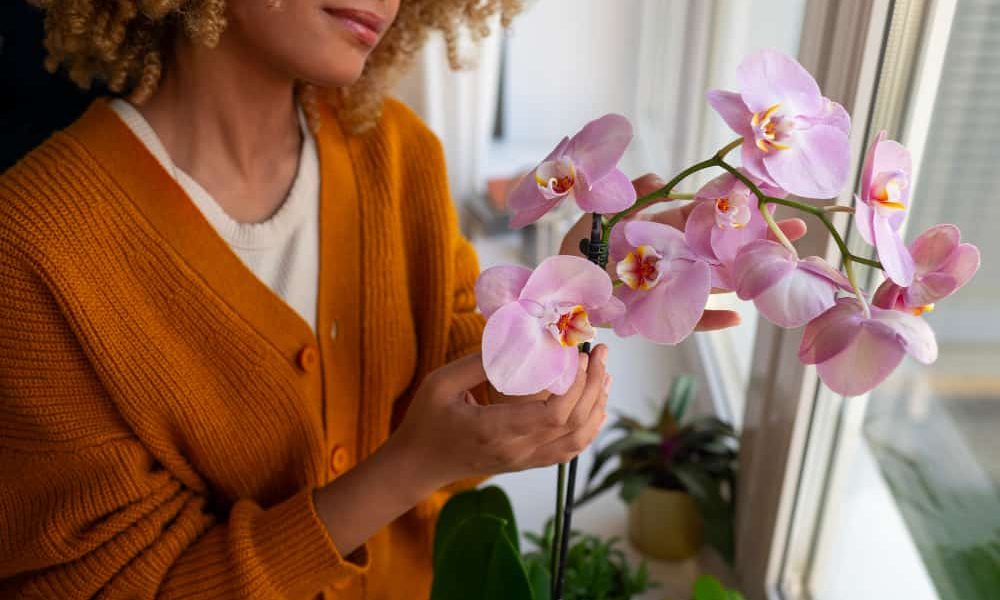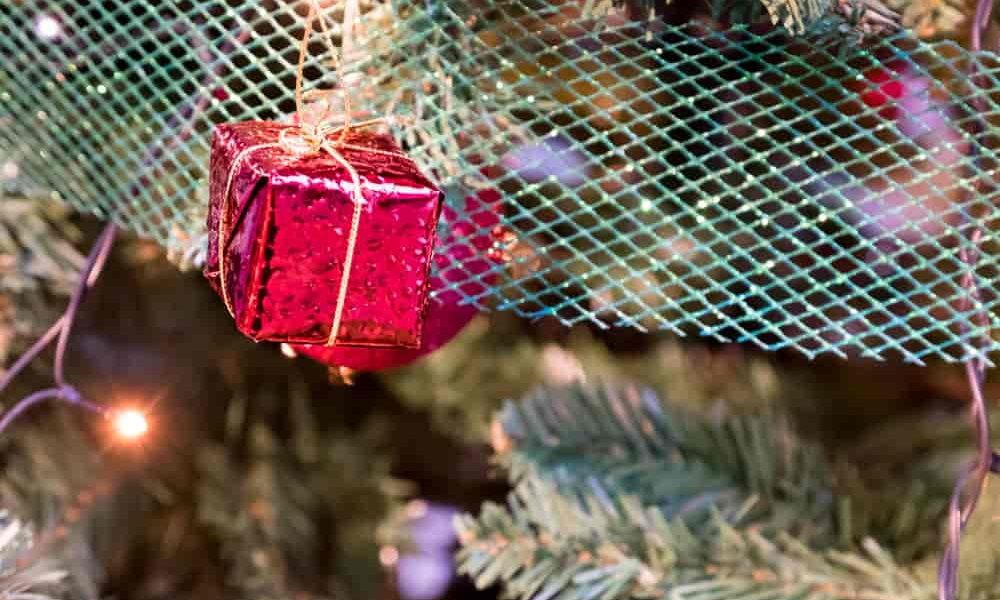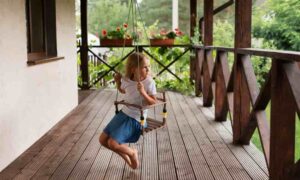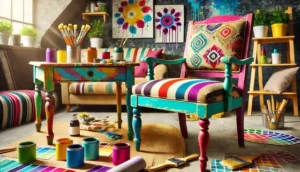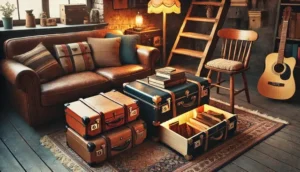In today’s world, finding creative ways to reduce waste and protect the environment has become more important than ever. One of the biggest contributors to pollution is plastic, particularly plastic bottles, which take hundreds of years to decompose. While recycling programs help, only a fraction of plastic waste gets repurposed. That’s where DIY crafts come into play—offering an exciting, hands-on way to recycle and upcycle plastic bottles into something beautiful and useful.
Crafting with plastic bottles is a great way to reduce the environmental impact of single-use plastics while allowing your creativity to shine. From practical garden tools to decorative wall art, there are countless ways to transform what would otherwise be trash into unique and functional items. Not only is this a budget-friendly approach to home projects, but it also encourages sustainable living by reusing materials in innovative ways.
In this article, we’ll explore creative ways to recycle plastic bottles into DIY crafts, offering you inspiration and step-by-step guides to make the most of this versatile material. Whether you’re looking to spruce up your home with a handmade planter, create fun toys for kids, or even fashion some personalized accessories, you’ll discover plenty of eco-friendly ideas that are simple to execute. Let’s dive into the world of upcycled plastic bottle crafts and start turning waste into wonderful creations!
1. How to Make a Plastic Bottle Bird Feeder
Recycling plastic bottles into useful items is not only a fun way to reduce waste, but it’s also a chance to create something practical and eco-friendly for your backyard. One of the easiest and most rewarding projects you can tackle is turning a plastic bottle into a bird feeder. Whether you’re a bird-watching enthusiast or just want to contribute to the local wildlife, a DIY plastic bottle bird feeder is an inexpensive and sustainable way to make a positive impact.
Materials Needed for a Simple Bird Feeder
Before you begin, you’ll need to gather a few basic materials. For this project, you’ll need:
- A plastic bottle (any size, but a 1-liter or 2-liter bottle works best)
- Two wooden spoons or dowels (to serve as perches)
- Twine or string (for hanging the feeder)
- Scissors or a craft knife (to make small holes in the bottle)
- Birdseed (to attract local birds)
All of these items can be found in your home or purchased inexpensively at a local store. If you have young children, this project is also a great opportunity to teach them about recycling and wildlife conservation.
Step-by-Step Guide to Creating the Feeder
Let’s dive into how to create your own plastic bottle bird feeder in just a few easy steps:
- Clean the Bottle: Start by thoroughly cleaning the plastic bottle. Rinse it with warm soapy water to remove any sticky residue or odors that could deter birds. Let it dry completely before proceeding to the next step.
- Cut Holes for Perches: Using scissors or a craft knife, carefully cut two small holes, one on either side of the bottle near the bottom. Make the holes large enough for the handles of the wooden spoons or dowels to fit through snugly. Be cautious when handling the knife to avoid any accidents.
- Insert the Perches: Slide the handles of the wooden spoons through the holes so that the bowl of each spoon sticks out from the side of the bottle. The birds will perch on the spoon handles and use the spoon bowls to catch the seeds that fall from above. Ensure the spoons are positioned firmly and won’t move once in place.
- Make Feeding Holes: About an inch above each spoon, cut a small hole in the bottle. These holes should be just large enough for birdseed to slowly spill out onto the spoons. Be mindful not to make the holes too big, as the seeds may pour out too quickly and make a mess.
- Fill the Bottle with Birdseed: Carefully pour birdseed into the bottle through the neck, filling it just below the level of the feeding holes. This will keep the feeder from becoming too heavy and ensure the seeds flow freely down to the perches.
- Attach the String: Tie a piece of twine or string around the neck of the bottle. Make sure it’s long enough to hang the feeder from a tree branch or hook. Secure the string tightly to prevent the feeder from falling when birds perch on it.
- Hang Your Bird Feeder: Find a suitable location to hang your feeder, ideally somewhere visible from a window so you can enjoy watching the birds. Make sure the spot is high enough to keep the feeder safe from cats or other predators.
Tips on Hanging and Maintaining the Bird Feeder
To keep your bird feeder in top shape, it’s important to maintain it regularly. Clean the feeder every few weeks to prevent mold from growing inside the bottle, especially in humid or rainy weather. Simply empty the birdseed, rinse the bottle with warm water, and let it dry before refilling. Also, make sure to check the string for wear and tear and replace it if necessary to avoid accidents.
By following these steps, you’ll have a charming, eco-friendly bird feeder that helps support your local bird population and reduces plastic waste. Plus, there’s something deeply satisfying about watching birds flock to a feeder you made yourself.
2. DIY Plastic Bottle Planters for Small Spaces
Urban living often comes with limited space, but that shouldn’t stop you from having a green corner in your home. Recycled plastic bottle planters are an excellent solution for growing small plants, herbs, or even flowers on a windowsill, balcony, or any tight space. These upcycled containers are lightweight, durable, and easily customizable to fit your decor, making them perfect for small-scale gardening.
Choosing the Right Size and Type of Bottles
When selecting plastic bottles for planters, consider the type of plant you want to grow. For herbs and small flowers, a 1-liter bottle is ideal. If you’re thinking of growing larger plants like tomatoes or leafy greens, a 2-liter bottle offers more room for root growth. If you’re working with really tight space, even a half-liter bottle can be cut down for use as a mini succulent planter.
Choose bottles with straight sides for ease of cutting and decorating, and make sure they are clean and dry before you start. Transparent bottles work well for decorative purposes, while opaque ones can help protect plant roots from excessive sunlight.
How to Cut and Prepare the Bottle for Planting
Once you’ve selected your bottles, follow these simple steps to transform them into planters:
- Cut the Bottle: Decide whether you want a vertical or horizontal planter. For a vertical planter, cut off the top third of the bottle and set it aside. For a horizontal planter, cut out a section of the side, leaving both ends intact. Use scissors or a sharp craft knife to make clean, even cuts. Be careful and ensure the edges aren’t jagged.
- Add Drainage Holes: Using a sharp tool or nail, puncture a few small holes in the bottom of the bottle to allow excess water to drain. Good drainage is essential to prevent your plants from getting waterlogged, especially if they’re placed outside where rain might fall on them.
- Prepare the Soil: Fill the bottle with a mix of potting soil and compost, leaving about an inch of space at the top. If you’re growing herbs or flowers, make sure to use a light, well-draining soil mix to support healthy root development.
- Plant Your Seeds or Seedlings: Depending on your plant choice, you can either sow seeds directly into the bottle or transplant small seedlings. Be sure to follow the planting depth and spacing guidelines specific to the type of plant you’re growing.
Creative Ways to Decorate Your Plastic Bottle Planters
One of the best parts of making DIY plastic bottle planters is the opportunity to decorate them. You can paint the outside of the bottle with acrylic or spray paint, giving it a vibrant, personalized touch that matches your home decor. If you’re feeling extra creative, try using decoupage techniques with colorful paper or magazine cutouts.
For a more rustic or natural look, consider wrapping the bottle in twine or burlap. If you’re using transparent bottles, adding a layer of decorative stones or sand inside can give your planter an eye-catching layered effect.
With these simple steps, you can transform old plastic bottles into beautiful planters that add a touch of green to your home, no matter how small your space is.
3. Making a Hanging Garden with Recycled Plastic Bottles
Creating a hanging garden using recycled plastic bottles is an excellent solution for those who are short on ground space but want to enjoy the benefits of gardening. This vertical garden concept not only saves space but also adds a unique, eco-friendly touch to your home, balcony, or even indoors. Whether you want to grow herbs, flowers, or small vegetables, a hanging garden made from plastic bottles is both functional and aesthetically pleasing.
Instructions for Creating a Vertical Hanging Garden
Building your own hanging garden from plastic bottles is relatively simple. Follow these steps to get started:
- Gather Your Materials: You will need several plastic bottles (depending on how many plants you want to grow), a strong rope or twine, a pair of scissors or a craft knife, a hole punch, and some potting soil. Optionally, you can also use hooks or nails to hang the garden.
- Prepare the Bottles: Take a few plastic bottles and cut an oval-shaped hole on one side. This opening will serve as the space where you will plant your seeds or seedlings. Make sure to leave enough plastic on the sides to hold the soil without it spilling out. Punch small holes in the bottom for drainage.
- Thread the Rope Through the Bottles: Punch two holes near the top of each bottle, directly across from each other. These holes will allow you to thread the rope or twine through, creating the vertical hanging structure. Start by tying a secure knot at the bottom of your rope, and thread it through the top of the first bottle, followed by the second bottle, and so on. Make sure there’s enough space between each bottle so the plants have room to grow.
- Add Soil and Plants: Fill each bottle with potting soil, leaving about an inch of space at the top. Then, either plant your seeds or transfer your seedlings into the bottle. Water the plants gently to avoid overwatering, as the small drainage holes will help excess water escape.
- Hang Your Vertical Garden: Find a suitable location for your hanging garden. You can use hooks to hang it from a balcony railing, a sturdy fence, or even indoors near a bright window. Ensure the structure is stable and won’t be disturbed by wind or other elements.
Benefits of Using Plastic Bottles for Indoor and Outdoor Spaces
One of the main advantages of using plastic bottles for a hanging garden is their lightweight and durable nature. They are easy to move around and can be placed both indoors and outdoors, depending on the plants you’re growing. Hanging gardens also help optimize space by allowing you to grow vertically rather than horizontally, making them ideal for urban gardeners with limited space.
Additionally, plastic bottles are resistant to weathering, so you don’t need to worry about them breaking down quickly when exposed to the elements. And, since you’re upcycling something that would otherwise be discarded, you’re contributing to a more sustainable, eco-friendly lifestyle.
Best Plants to Grow in Plastic Bottle Gardens
For your hanging garden, consider growing plants that don’t require too much root space. Herbs like basil, mint, and parsley are excellent choices for small planters. You can also try growing lettuce, spinach, or strawberries. If you want to add a splash of color, consider planting small flowers like petunias or marigolds. These plants will thrive in a hanging garden and bring vibrancy to your space.
4. How to Turn Plastic Bottles into Colorful Lanterns
Looking for a creative way to upcycle plastic bottles while adding a whimsical touch to your home or garden? Crafting colorful lanterns from recycled bottles is an easy, enjoyable project that can brighten up any space. These DIY lanterns are perfect for decorating outdoor patios, garden parties, or even adding a festive glow to your indoor living space.
Tools and Materials Required to Make Plastic Bottle Lanterns
To get started, gather the following materials:
- Several plastic bottles (choose bottles with smooth surfaces for easier decorating)
- Scissors or a craft knife
- LED tea lights or small battery-operated string lights
- Acrylic paint or spray paint
- Brushes and other decorative materials (e.g., glitter, stickers, or washi tape)
Step-by-Step Tutorial for Cutting and Shaping the Bottles
- Prepare the Bottles: Start by cleaning the plastic bottles to remove any labels or residue. Cut the top portion of each bottle off, leaving the bottom section to serve as the base of your lantern. You can cut the bottle into different shapes—cylindrical, flared, or scalloped edges—for variety.
- Decorate the Bottles: Use acrylic paint or spray paint to add color to your lanterns. If you’re going for a translucent effect, apply thin layers of paint to allow some light to shine through. For a bolder look, try using vibrant, opaque colors. Add extra embellishments like glitter, stickers, or even decoupage designs to personalize your lanterns.
- Create the Lantern Openings: Using a craft knife, carefully cut out small designs or patterns on the sides of the bottles to allow light to pass through. These could be stars, circles, or any other shape you like. The cutouts will give your lanterns a beautiful, glowing effect when the lights are turned on.
- Insert the Lights: Once your lanterns are decorated and dry, place LED tea lights or small battery-operated string lights inside each bottle. Avoid using real candles, as plastic bottles can melt or catch fire. LED lights are safe, energy-efficient, and can last for a long time without needing replacement.
- Hang or Display the Lanterns: If you want to hang the lanterns, punch small holes near the top of each bottle and thread a piece of string or wire through them. You can hang them from tree branches, a porch, or even indoors along a mantelpiece. Alternatively, place them along pathways or on tables to create a cozy, illuminated atmosphere.
Ideas for Decorating and Lighting Up Your DIY Lanterns
There are countless ways to customize your lanterns to fit any theme or occasion. For a rustic or vintage look, consider wrapping the bottles in jute or twine before adding the lights. If you’re making lanterns for a festive event, experiment with bright colors and glitter to match the celebration’s theme.
For a garden party, opt for a soft pastel palette that complements the natural surroundings. You can also experiment with different light colors by using colored LED lights or wrapping the inside of the bottle with tissue paper to create a diffused, tinted glow.
5. Easy Plastic Bottle Storage Containers for Organizing
Plastic bottles are incredibly versatile when it comes to organization. By repurposing them, you can create durable, customizable storage containers that help declutter your home, office, or garage. Not only are these containers practical, but they also offer an opportunity to get creative with designs and decorations.
How to Upcycle Plastic Bottles into Practical Storage Containers
Follow these simple steps to turn your empty bottles into functional storage solutions:
- Cut the Bottle: For an open storage container, cut off the top portion of the bottle using scissors or a craft knife. You can cut straight across or experiment with angled cuts for a more dynamic shape. For a closed container, cut the bottle in half and use both parts to create a lid and base.
- Smooth the Edges: To ensure the edges aren’t sharp, use sandpaper to smooth them out. You can also cover the edges with fabric, tape, or ribbon to give the containers a polished look.
- Customize Your Container: Paint the outside of the bottle to match your home decor, or leave it transparent if you prefer a minimalistic look. You can also add labels or stickers to make the container more functional. For example, you could create a container for office supplies, craft materials, or kitchen items like pasta or rice.
6. How to Make a DIY Plastic Bottle Jewelry Holder
Upcycling plastic bottles into a functional jewelry holder is an inventive way to stay organized while reducing plastic waste. This simple yet stylish project transforms empty bottles into a unique accessory display, perfect for keeping your rings, earrings, and bracelets in one place. With just a few supplies and a little creativity, you can craft a jewelry holder that suits your personal style.
Crafting a Functional and Stylish Jewelry Holder from Plastic Bottles
To begin, gather the following materials:
- Several plastic bottles of varying sizes (different bottle bottoms will create interesting tiered layers)
- A long metal or wooden rod (this will hold the tiers together)
- A drill (to create holes in the bottle bottoms)
- Scissors or a craft knife
- Optional: spray paint, washi tape, or other decorative materials
- Cut the Bottle Bottoms: Start by cutting the bottoms off your plastic bottles. You’ll want the base of each bottle to be around 2-3 inches tall, depending on the size of your jewelry. The bottle bottoms will form the trays for your jewelry holder. You can use different sizes of bottles to create a tiered effect, with the largest at the bottom and the smallest on top.
- Drill a Hole in Each Bottle Bottom: Using a drill, create a hole in the center of each bottle bottom. This hole should be just wide enough for the rod to pass through. Be sure to smooth any rough edges around the hole to prevent your jewelry from catching.
- Assemble the Jewelry Holder: Thread the rod through the holes in the bottle bottoms, starting with the largest at the bottom. Stack each bottle bottom on top of the other, creating a tiered structure. Make sure the rod is long enough to hold all the layers securely.
- Secure and Decorate: Once all the bottle bottoms are in place, secure the rod at both ends to ensure stability. You can either leave the jewelry holder as is or get creative with paint and other decorations. Spray paint can give the holder a sleek, metallic finish, or you can wrap the bottle bottoms with colorful washi tape for a fun, modern look.
Decorating Ideas to Match Your Home Décor
The great thing about a DIY plastic bottle jewelry holder is that it can be personalized to fit your style. You can paint each tier a different color, add stickers, or even use glitter to give it a sparkly touch. If you prefer a minimalist aesthetic, keep it simple with neutral tones or metallic paint. Alternatively, match the colors of the jewelry holder with your bedroom or dressing area to make it a cohesive part of your décor.
Tips for Arranging and Organizing Jewelry Efficiently
To maximize the functionality of your jewelry holder, arrange your pieces by category. Use the largest bottom tier for bracelets or necklaces, and the smaller upper tiers for rings and earrings. You can even add small hooks or clips to the sides of the bottle bottoms to hang items like hoop earrings or thin chains. This will not only keep your jewelry organized but also make it easier to find what you need quickly.
7. Creating Fun Toys for Kids with Plastic Bottles
Recycling plastic bottles into toys is a fantastic way to engage children in eco-friendly crafts while sparking their imagination. DIY toys made from plastic bottles are not only budget-friendly but also provide hours of creative playtime for kids. From mini cars to playful animals, the possibilities are endless, and these crafts can be a fun project for the whole family.
Easy-to-Make Toys from Plastic Bottles: Cars, Animals, and More
Here are a few ideas to get you started on crafting toys from plastic bottles:
- Plastic Bottle Race Cars: Transform plastic bottles into mini race cars that kids can push around. You’ll need:
- A plastic bottle (preferably 500ml or 1-liter size)
- Four plastic bottle caps (for the wheels)
- A straw or wooden dowel (to serve as axles)
- Paint and markers for decoration
How to Make: Cut a small rectangular opening in the side of the bottle to form the car’s “seat” or interior. Paint the bottle in your child’s favorite colors and let it dry. Punch holes in the bottle caps and thread the straw or dowel through to create the axles. Attach the bottle caps as wheels on each side of the car. Your child can now enjoy racing their eco-friendly plastic bottle car around the house!
- Plastic Bottle Animals: Crafting cute animals from plastic bottles is an easy and fun way to encourage creativity in kids. Use the bottle as the animal’s body and paint it to resemble a cat, dog, or even a dinosaur. Attach ears, legs, or wings using paper, felt, or fabric.
How to Make: For a simple pig, cut a bottle in half, then glue or tape a pink piece of fabric around it. Add small legs using glued-on bottle caps or cardboard pieces, and create a face with googly eyes and a pink felt nose. Kids will love playing with their new toy, and you can make a whole zoo of plastic bottle animals together.
Engaging Kids in Eco-Friendly Crafting
Crafting toys from plastic bottles not only encourages creativity but also teaches children the value of recycling and environmental responsibility. Explain to your kids how recycling and upcycling reduce waste and protect nature. Make it a fun game where they find creative uses for materials you might otherwise throw away.
Additionally, you can organize eco-friendly craft days where kids bring their old plastic bottles, and you help them transform these materials into new toys. This hands-on activity can make sustainability a more tangible concept for children.
Safety Tips When Working with Children on Plastic Bottle Crafts
While crafting with plastic bottles is generally safe, there are a few precautions to keep in mind:
- Always supervise children when using scissors or craft knives to cut plastic bottles.
- Make sure to smooth any sharp edges after cutting to prevent injury.
- Use non-toxic paints and adhesives, especially when working with younger children.
- Avoid small parts or pieces that could be choking hazards for toddlers and very young children.
By following these safety tips, you can ensure that your crafting sessions are both fun and safe.
8. Upcycling Plastic Bottles into Garden Watering Tools
Plastic bottles can be repurposed into a variety of useful gardening tools, helping you conserve water while keeping your plants healthy. Whether you’re watering indoor plants or managing an outdoor garden, plastic bottle watering tools are an inexpensive and eco-friendly alternative to traditional garden equipment.
Step-by-Step Guide to Creating a Plastic Bottle Watering Can
A simple DIY watering can made from a plastic bottle can be just as effective as store-bought versions. Here’s how to make one:
- Choose the Right Bottle: Select a large plastic bottle, preferably a 2-liter one, to hold enough water for multiple plants. Clean the bottle thoroughly to remove any residue.
- Poke Holes in the Cap: Use a small nail or a needle to poke several tiny holes in the bottle cap. The number of holes will determine the water flow, so adjust it based on how much water you want to release at once.
- Fill the Bottle with Water: Fill the bottle with water and screw the cap back on. When you tip the bottle upside down, water will flow through the holes in the cap, allowing you to water your plants with precision.
- Optional: Add a Handle If you want a more traditional watering can design, you can add a handle by cutting a strip from another plastic bottle and attaching it to your watering can with strong glue or tape.
Benefits of Using Recycled Materials for Garden Tools
Using plastic bottles as garden watering tools has several benefits. First, it’s an eco-friendly option that reduces waste. Rather than purchasing new plastic items, you’re giving old bottles a second life. Second, DIY bottle watering cans are perfect for small gardens, balconies, or indoor plants, where a gentle, controlled water flow is needed.
Plus, if you’re a gardener who travels, this easy-to-make watering can is lightweight and portable, making it convenient to carry with you wherever you go.
How to Make a Drip Irrigation System Using Plastic Bottles
For a more advanced gardening project, you can turn plastic bottles into a drip irrigation system to keep your plants hydrated with minimal effort. Here’s how:
- Cut the Bottle Bottom: Start by cutting off the bottom of the plastic bottle. This opening will serve as the water reservoir.
- Poke Holes in the Sides: Poke small holes in the sides of the bottle, near the bottom. These holes will allow water to slowly seep into the soil.
- Bury the Bottle: Place the bottle into the soil with the cap side down, leaving the top of the bottle above ground. Fill the bottle with water, and it will gradually drip into the soil, keeping your plants hydrated over time.
This simple drip irrigation system is perfect for vegetable gardens or flower beds and can save water by delivering moisture directly to the plant roots.
9. How to Make DIY Plastic Bottle Wall Art
Plastic bottles can be turned into stunning and unique wall art, perfect for adding a splash of creativity to any space. This eco-friendly project allows you to experiment with shapes, colors, and textures to create customized art pieces that can brighten up your home. Whether you’re looking to add a pop of color to a dull wall or want to craft something truly one-of-a-kind, plastic bottle wall art is an exciting way to recycle while unleashing your artistic side.
Creative Designs for Using Plastic Bottle Pieces in Wall Art
There are endless design possibilities when it comes to plastic bottle wall art. The versatility of plastic allows you to cut, bend, and shape the material into virtually any form you desire. Some creative design ideas include:
- Flower Blooms: Cut the tops or bottoms of plastic bottles into petal shapes to create a variety of flowers. You can layer different sizes to give the appearance of blooming flowers, then paint or spray paint them in vibrant colors. Arrange them on a canvas or directly onto your wall to form a garden-inspired mural.
- Geometric Patterns: If you prefer a modern, abstract look, cut the bottles into uniform geometric shapes like circles, squares, or triangles. Arrange these shapes in patterns to create striking contemporary wall art. Consider using clear plastic bottles to create a minimalist design, or paint them in bold colors for a more dramatic effect.
- Mosaic-Style Art: Plastic bottles can also be cut into small, irregular pieces to mimic the look of mosaic tiles. Use different colors and sizes to create a mosaic image, whether it’s an abstract pattern or a more defined image like an animal or landscape. Glue these pieces onto a sturdy backing like wood or canvas to create a durable and eye-catching art piece.
Painting and Assembling Techniques for a Unique Look
To achieve a polished, unique look with your plastic bottle wall art, follow these simple painting and assembling tips:
- Choose Your Paint: Acrylic or spray paints work best for painting plastic bottles, as they adhere well to the slick surface. Consider using metallic paints for a sleek, modern aesthetic, or opt for bright, primary colors to create a lively and playful piece. For a more subtle look, pastel shades or ombre effects can add a soft touch to your wall art.
- Layering for Depth: Layering different pieces of plastic bottles can add depth and dimension to your artwork. For example, if you’re creating flower shapes, layer smaller petal pieces over larger ones to give the illusion of depth and fullness. You can also experiment with overlapping shapes and colors to create more complex designs.
- Glue and Assemble: Hot glue works best for assembling plastic bottle pieces, as it bonds quickly and securely. Arrange your pieces on a canvas or wooden board before gluing them down to ensure everything fits together nicely. If you’re creating a large wall mural, start by mapping out your design on the wall with light pencil marks to guide your placement.
How to Frame and Display Your Finished Plastic Bottle Artwork
Once your plastic bottle wall art is complete, it’s time to display it! If you’ve created your art on a canvas or wooden backing, consider framing it in a simple, neutral-colored frame to highlight the vibrant artwork without distracting from it. Alternatively, if you’ve designed a mural directly on the wall, there’s no need for a frame—just ensure your artwork is centered and arranged neatly.
For an added touch, consider lighting your artwork with small LED spotlights or string lights to enhance the colors and textures of the plastic. This will give your piece a glowing effect, especially if you’ve used clear or translucent plastic bottles in your design.
10. Crafting Plastic Bottle Bracelets and Accessories
Upcycling plastic bottles into fashion accessories like bracelets is an innovative and eco-conscious way to add to your wardrobe. Not only are these accessories stylish and customizable, but they also offer a great opportunity to express your personal style while reducing plastic waste. With just a few tools and some imagination, you can transform plastic bottles into lightweight, wearable art.
How to Cut and Shape Plastic Bottles for Fashion Accessories
Creating plastic bottle bracelets is a straightforward process that starts with cutting and shaping the bottle. Here’s how:
- Cut the Bottle: Begin by cutting off the top and bottom of the bottle, leaving a long cylinder of plastic. Next, cut the cylinder vertically to create a flat sheet of plastic. From here, you can cut strips or shapes for your accessories, depending on the design you want.
- Shape the Plastic: To shape your bracelet, wrap the plastic strip around your wrist to determine the size. Once you have the right fit, you can trim the edges to smooth them out. If you want to create a more intricate design, you can use heat to bend the plastic into different shapes. Be cautious when applying heat, as plastic can warp quickly.
- Sand and Smooth the Edges: After cutting the plastic, use fine-grit sandpaper to smooth the edges and avoid any sharp points that might be uncomfortable on the skin. This step is especially important if you’re making jewelry for children, as it ensures the accessory is safe to wear.
Step-by-Step Instructions for Making Bracelets, Earrings, or Necklaces
- Creating a Basic Bracelet: Once you’ve cut your plastic into a strip and shaped it into a bracelet, you can decorate it using paints, markers, or adhesive decorations like rhinestones or glitter. You can also wrap the bracelet in fabric, twine, or leather for a more textured, natural look.
- Earrings and Necklaces: For earrings, cut smaller shapes like circles, triangles, or abstract designs from the plastic sheet. Drill small holes at the top of each shape and attach earring hooks. For necklaces, cut larger, bolder shapes and string them onto a chain or ribbon. You can paint or decorate the plastic pieces to match your personal style.
- Adding Embellishments: To take your accessories to the next level, consider adding embellishments like beads, charms, or even feathers. Glue them directly onto the plastic or use small holes to attach them with jump rings. This gives your plastic bottle jewelry a more professional and polished finish.
Tips on Adding Embellishments for a Personalized Touch
The beauty of DIY plastic bottle jewelry is that you can make it completely your own. Here are a few ideas to personalize your creations:
- Use Metallic Paint: Add a chic, industrial look to your plastic jewelry by painting it with metallic colors like silver, gold, or copper.
- Incorporate Natural Elements: Combine plastic with natural materials like wood beads, shells, or stones to create a mixed-media piece.
- Go Bold with Color: Don’t be afraid to experiment with bright, vibrant colors to make your accessories stand out. You can also try tie-dye effects or patterns for a playful touch.
Conclusion: The Benefits of Recycling Plastic Bottles for DIY Crafts
Recycling plastic bottles into DIY crafts is not just a fun and creative hobby—it’s a meaningful way to contribute to environmental sustainability. Each craft project helps reduce the amount of plastic waste that ends up in landfills or oceans, turning what would be garbage into something useful and beautiful.
By upcycling plastic bottles, you’re taking an active role in protecting the environment, conserving resources, and reducing pollution. Plus, these projects offer endless opportunities to express your creativity, whether you’re making a functional garden tool, a unique piece of jewelry, or an eye-catching work of art.
As more people embrace upcycling and DIY crafting, the collective impact on reducing plastic waste will grow. Every small project, like turning a bottle into a bird feeder or a bracelet, contributes to a larger movement toward sustainability and responsible consumption. So the next time you finish a plastic bottle, instead of tossing it in the trash, consider how you can repurpose it into your next DIY masterpiece.
